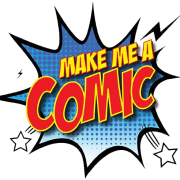History of Comic Books - Part 2
This is part 2 of the history of comic books, here we start in the Bronze Age which started in 1970. If you haven’t already please read part 1 first. You might also be interested in reading the History of Comic Strips.
The Bronze Age of Comic Books
The bronze age of comic books started in 1970 and ended in 1985. The Comics Code had been established in the Silver Age of comic books, but soon into the bronze age their restrictions started to become looser and comic stories started to take on a darker twist. The comics code put out an announcement saying “Vampires, ghouls, and werewolves shall be permitted to be used when handled in the classic tradition …” With restrictions on the horror genre more lenient this opened up the doors for comic series such as Ghost Rider and Tales of the Zombie. And then supernatural characters were introduced such as Swamp Thing and Blade.
Comic stories also started to take on social issues such as racism and poverty. A comic story which comes to mind is Green Lantern when they added Green Arrow as a character and they fought against racism, poverty and pollution. Green Arrow also confronted his sidekicks heroin addiction and iron Man faced his problems with alcohol.
It was also recognised that the majority of superheroes were white men, so DC and Marvel introduced heroes such as Storm and Black Lightning.


The Dark Age of Comic Books
The dark age of comic books ran from 1985 - 1996, and also coincided with DC’s 50th anniversary. This is when DC launched Crisis on Infinite Earths. It was a 12 book series where DC cleared up some plot inconsistencies, as storylines from the golden and silver age conflicted. The idea was to create multiple realities come together to form one reality. For instance how Justice league from the 1940’s could exist at the same time as the other Justice League from the 1960’s but with a different Green Lantern. Many characters were killed off and some characters which hadn’t been featured for years came back to life. Crisis on Infinite Earths was a huge success.
The dark age was also an era when villains became very popular, with dark storylines such as Watchmen. Where suddenly the world is not admiring the heroes, but is actually against them. Or Batman Returns, where batman retires leaving Gotham city to be ruled by criminals. Superman died, Batman got injured and Green lanterns slaughtered fellow lanterns. It was a dark dark time for comics and readers loved it.
My favorite graphic novel came out in this time, Maus by Art Spiegelman. A story of the jews in Nazi Germany during WWII. This graphic novel went on to win the Pulizter prize.
Towards the end of this era comics and their merchandise became very inflated, and as a result sales slumped. There were just too many comics and too many products out there that sales were getting diluted across all the different brands. The era ended with marvel Comics going bankrupt in 1996.
The modern Age of Comic Books
This era started in 1996 and continues into the present day. Comics took a turn at the start of the modern age becoming more optimistic and upbeat, Kingdom Come started this fresh start off. Superheroes became strong again, comic stories had happier endings. Publishers took on less names and created leaner stories to bring costs down and boost sales.
The Batman and Robin film in 1997 was a huge flop and as a result superhero movies were put on hold, until X-Men was released in 2000 which started to put superheroes and the comic industry back on track.
Comics being turned into TV series and movies really boosted the industry and strengthen the fan base considerably. In 2021 Spiderman: No Way Home grossed nearly $1,921,847,111 showing that comics truly have made a come back.


Best Selling Comic Books
The modern age has seen some of the highest grossing comic books, here are the top 5:
- One Piece by Eiichiro Oda. We haven’t even touched on Manga yet, manga is Japanese comic art, which we will treat separately. 104 volumes and $516.5 million in sales.
- Asterix by René Goscinny and Albert Uderzo. 39 volumes and $385 million
- Peanuts by Charles M. Schulz.Started in 1950, $300 million. A personal favorite of mine, plus the TV show.
- Golgo 13 by Takao Saito.Another Japanese manga series, 203 volumes, $300 million.
- Lucky Luke by Morris. A western themed comic, 82 volumes and $300 million.




